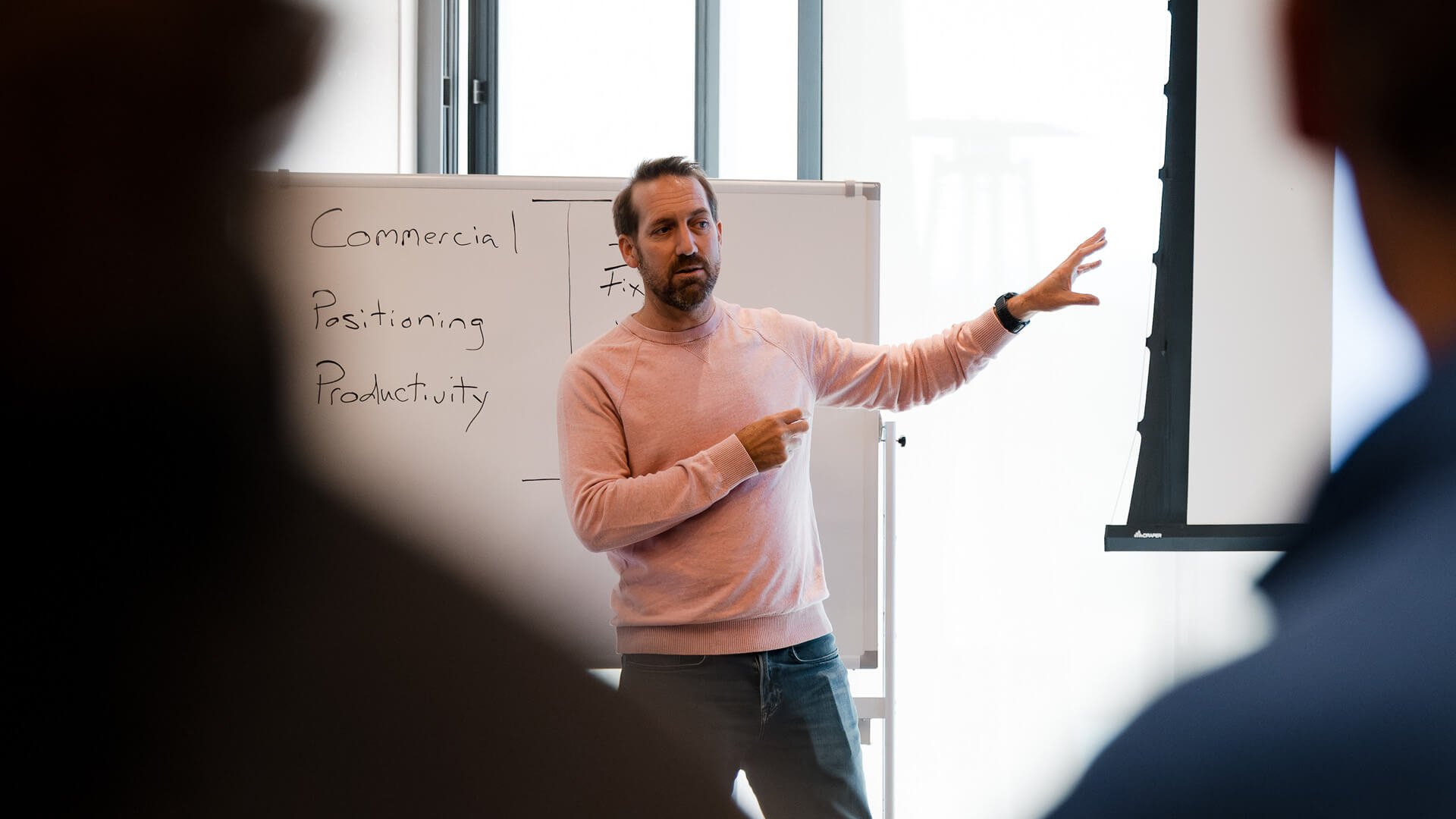Reflecting on Founder Mode and Preparing for What's Next
Now that you’ve journeyed through this series on Founder Mode, it’s time to step back and reflect on what it truly means to operate in this state. Founder Mode isn’t just a way of working — it’s a mindset that demands resilience, agility, vision, and a willingness to navigate complexity. Now, it’s time to ask yourself: Are you comfortable operating in Founder Mode, with all its intensity and responsibility? And just as importantly: Is your team equipped to thrive alongside you in this mode?
In the previous part of the Founder Mode Series, we explored the pivotal moment when a founder passes the reins to a new leader — someone who understands the operations and honors the company’s Forever Agreements. Done right, this transition lets us step back confidently, knowing our legacy is in good hands.
Now, we’ll reflect on the key lessons learned about operating in Founder Mode — balancing intensity with delegation, managing transitions, and stepping back into meaningful Work.
Throughout this series, we’ve examined the intensity, challenges, and pivotal moments we face as we build and grow our companies. Founder Mode drives early success, but it’s not sustainable to stay in it forever. Learning when to shift between modes like Founder Mode, Manager Mode, and Steward Mode has been a recurring theme, underscoring the importance of adapting leadership styles as your company evolves through the Stages of Development.
Here are six key insights from the series to guide your reflection, help you navigate challenges, and prepare for your company's future.
1. The Essential Nature of Founder Mode
One of the core themes of this series has been recognizing the essential nature of Founder Mode. It’s the distinct approach founders — especially the "all-in" type — bring to running companies. It’s straightforward, often intense, and stands apart from how most traditional organizations operate. Founder Mode is the driving force behind a company’s birth and early growth, enabling us to navigate uncertainty, make bold decisions, and push the company forward when others might hesitate.
Key takeaway: Founder Mode isn’t just a mindset; it’s a necessary way of being for us founders, especially in the early stages when survival depends on quick thinking, innovation, and relentless focus. It’s what separates those who build enduring companies from those who don’t.
2. The Double-Edged Sword of Founder Mode
While Founder Mode is essential, it can also be a double-edged sword if not managed well. As the company grows, the intensity that once drove success can create friction. We should learn to balance our instinct to control everything with the need to delegate and trust others.
Key takeaway: As the company evolves, so too should our relationship with Founder Mode. Learning when to pull back and let the team take over is crucial for long-term success. Founders who master this balance ensure our companies grow beyond our personal capacity.
3. The Trap of Manager Mode
Throughout this series, we’ve discussed the natural tension between a founder’s visionary instincts and the operational demands of Manager Mode. While Manager Mode is critical for ensuring processes are followed and commitments are met, it’s not where we add the most value — and staying there too long can lead to frustration, burnout, and stagnation.
The key is knowing when to shift back out of Manager Mode and delegate. Putting the right people in the right seats frees us to operate primarily in strategic and visionary roles while stepping into Manager Mode only when necessary.
Key takeaway: Our teams aren't just there to maintain operations — they help us avoid getting stuck in Manager Mode by absorbing many of its responsibilities, allowing us to focus on innovation, vision, and long-term growth.
4. Navigating the Stages of Development
We’ve also looked at how Founder Mode manifests at each stage of a company’s development — from survival to scaling to stewardship. Each stage presents unique challenges, and we should adapt our operating mode to fit the company’s needs as it grows.
Key takeaway: Understanding which mode to lean into at each stage is key to navigating the company’s evolution. Whether it’s Warrior Mode in the early days of survival or Steward Mode as the company matures, we need to shift between modes to lead effectively.
5. Preparing for the Transition to New Leadership
As companies grow, there comes a time when we have to pass the reins to a new leader — someone who respects the company’s soul and carries forward its Forever Agreements. We've discussed how we can transition out of direct leadership without losing the vision in what we’ve built.
Key takeaway: The decision to step back doesn’t mean abandoning the company. It’s about ensuring that our legacy and vision live on through a new leader who honors the company’s culture and Compelling Why.
6. Reflecting on This Series
At its core, this series was about helping us and those around us understand the complex, often messy reality of Founder Mode. It’s not a polished, linear journey — it’s filled with highs, lows, and moments of intense focus that can be both exhilarating and exhausting.
Key takeaway: We’ve now shed light on the unique nature of Founder Mode, helped founders feel understood, and provided practical insights on how to navigate the challenges of building, running, scaling, and eventually stepping back from a company. More than anything else, we hope the Founder Mode Series contributes to a deeper understanding of what it means for us to build damn great companies.
Founders Are a Unique Breed
We create the jobs of tomorrow, build companies that shape industries, and lead with a blend of vision, grit, and instinct few others possess. Founder Mode lies at the core of this — driving us to overcome obstacles and turn ideas into reality.
As you reflect on this series, I hope it’s given you a deeper understanding of what it means to operate in Founder Mode while equipping you — whether you’re a founder or working alongside one — with the tools to navigate this intense, demanding — and yes, chaotic — journey more effectively.
This was where I initially planned to end the series, but founders never stop evolving. Industries change, challenges shift, and new opportunities emerge. So, while this may be the conclusion for now, soon I'm going to start a weekly Founder Mode blog in addition to my weekly 90 blog. In the meantime, I encourage you to take a moment for self-reflection. Whether you’re an active founder or a prospective one, consider what it means to commit fully to the founder’s journey.
Up Next...
With the Founder Mode Series behind us, I want to offer another resource to help you evaluate your progress as you master Founder Mode. Soon we’ll be releasing our Founder Mode Workbook, including a series of questions to help you understand where you are now and how to get from here to where you’re going.
This won’t be a one-time exercise — I encourage you to return to it regularly as you progress through the Stages of Development to track your growth. Not sure which stage you’re currently in? Find out here.
My hope is that the insights shared in this series will give those on the founder’s path a greater appreciation for both the challenges and the immense rewards of embracing the founder’s journey.
- Part 1: What Is Founder Mode, Really?
- Part 2: Tapping into the Founder's Mindset
- Part 3: Essential Modes for Founders
- Part 4: Understanding the Personalities of Visionary and Legacy Founders
- Part 5: Founders-Within: The Founder’s Mindset Inside Large Organizations
- Part 6: Mastering Founder Mode: The Core Operating System
- Part 7: 6 Ingredients Founders Use to Build Damn Good, If Not Great, Companies
- Part 8: The Founder's Journey Through the Lens of the Stages of Development
- Part 9: The Trap of Manager Mode: Why Founders Can’t (and Shouldn’t) Live There for Long
- Part 10: Great Brands Are Built by Great Founders
- Part 11: 5 Strategies to Navigate Founder Mode: For Founders
- Part 12: 5 Strategies to Navigate Founder Mode: For Colleagues
- Part 13: How to Let Go While Preserving Your Company’s Legacy






